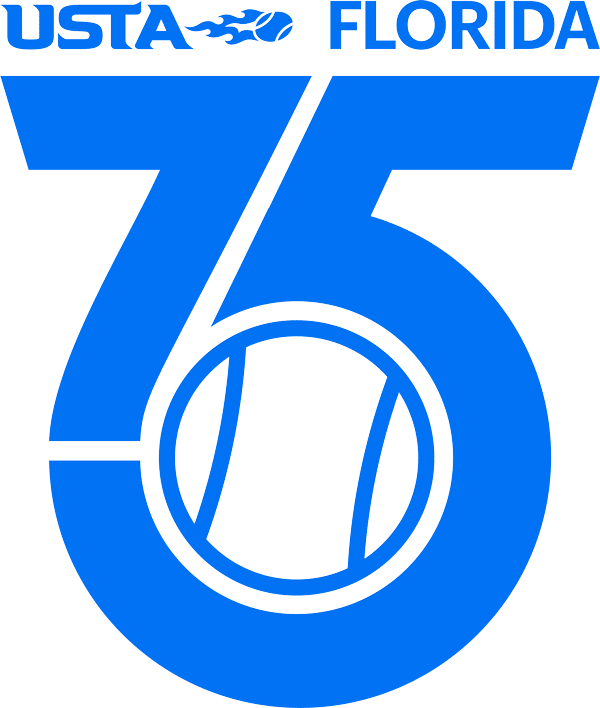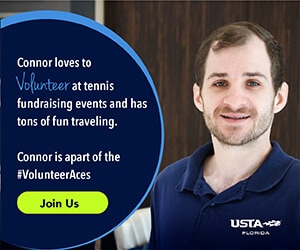This article was written by the USTA Florida Board of Directors
We need more tennis coaches in public tennis parks. FULL STOP.
Nothing – and we mean nothing – we do as a USTA section or industry will have a greater impact on the growth of tennis than solving the puzzle of coaching in the public park space. It will take all of us to change the way we think about coaching, who we recruit and how we train our coaches, to secure the future of this sport for the long term.
For more than a decade, the tennis industry has discussed the need to raise the level of coaching in America. There have been countless working groups and forums dedicated to how we elevate the standards for coach education. The results of those discussions brought us a new accreditation process and some common standards for training. So why didn’t that work?
The answer: Strategy
The idea that only increasing certification requirements for existing coaches (and leaving those who don’t adhere to the new standards behind) would elevate an entire industry and grow tennis is fundamentally flawed. You can’t raise the standard if you don’t have enough coaches to begin with. And you can’t grow the game with fewer coaches than you have now. That’s a flawed strategy.
If you want better talent and acumen in any profession, you need to bring in more people. When you have competition in the profession, you have choice in whom you hire. Only then can you raise standards. When you barely have enough people to do any job, the best individuals will take the highest-paying jobs, leading to vacancies at the entry and mid-level roles. When you don’t have anywhere near enough people to do any job, you must hire everyone, regardless of their skill or desire.
This is precisely the state of tennis coaching today. There are nowhere near enough coaches to fill a fraction of the jobs. Private clubs can hire coaches because they can afford to pay more. Public parks, which serve the most players and rely on tax dollars, are bearing the brunt of staff vacancies – leaving public courts vacant and at risk.
USTA Florida directly manages four public tennis centers in the state of Florida. The majority of our board members also directly manage or coach at other public tennis centers in the state. We know the challenges because we feel them ourselves. Every public facility we hear from tells us the same story: they just can’t find tennis coaches.
So, what’s the solution?
During the last several years, USTA Florida has spent a significant amount of time working through the problems in the current coaching structure. We’ve done more than talk this issue to death. We’ve put money and human resources behind trying new ideas and looking at where there continue to be gaps in the coaching space.
Here is what we found:
First, we need to cast a wider net and recruit coaches from everywhere.
Anyone can coach tennis at some level. We can’t afford to only recruit college tennis players and 4.5-rated recreational players. Parents, teachers, volunteers – we need them all to become community coaches to serve the current boom.
In the fall of 2021, USTA Florida launched a new Community Coach Program to help anyone teach tennis. This program is designed to offer short sessions (2-3 hours) of training focused on six different areas of community programs. Keeping the sessions short and easy to digest/apply means coaches of all levels can learn together and from each other. Hosting the trainings at public parks also provides a service to cities that need to develop and train coaches. To date we have held 52 training sessions and welcomed nearly 300 participants in every region of Florida.
We know that other USTA sections are doing similar work. These community coaching programs need to be expanded throughout the country and delivered on the broadest scale possible. Without enough coaches, none of our other efforts will be successful.
Second, we need a formal program that can place developing coaches in meaningful jobs in the public tennis parks immediately.
One of the major hurdles that cities face is approval to hire more people. To deliver tennis in a public park, you need humans on the courts regularly. Cities are not well suited to continually recruit tennis staff. Even those of us at USTA Florida who have been doing this work for decades find it challenging to source talent.
To solve this problem, the entire industry will have to work together to create a development program that includes more/better training, placement services, and paid fellowships that will make it attractive and viable for new coaches to work in public tennis centers. Paying a full-time salary and benefits while someone develops also would attract more people to these jobs, and it also takes pressure off municipalities that simply can’t ask for additional monies to spend on tennis above other recreation services.
At the same time, we must do more to educate municipalities on the business of tennis – what to charge, how to deliver programs and the qualities they should require in coaches. Most cities do not know that tennis has the ability to generate significant revenue, or at least pay for itself. Facilities like Roger Scott Tennis Center in Pensacola are excellent examples of how to run a successful public tennis facility. We all need to step up and advocate for more investment in public parks and help cities run them exceptionally well.
Third, we need a clear structure and pathway for coach education that provides a wealth of regular opportunities for professional development and certification for aspiring coaches at all levels.
One way to accomplish this is to separate the concept of membership in a teaching organization from certification. The current system offers an “all or nothing” approach: You are either certified and a member and insured, or you are nothing. This model perpetuates a race to certification and devalues the importance of education and professional development at all levels of coaching. It also places all potential for revenue in any teaching organization on membership.
Another problem with this model – and mandating certification – lies in the lack of opportunities to get certified as a tennis coach. Even with the USTA National Campus in Orlando, USTA Florida has struggled to get our coaches certified through USPTA and PTR when needed. The requirements (online and in-person) are unclear and the opportunities to do the certification are few and far between.
Let’s think differently.
What if the only requirement to be a member of a teaching organization was to pass Safe Play and attend a single Community Coach Workshop? You pay a minimal fee and receive your insurance. You then become qualified for a public park fellowship program. You can earn a real wage while you learn. You get access to educational opportunities at a lower cost than non-members.
In this model, you join a certification organization because you want to coach. You stay because you get opportunities to learn and grow. Certification organizations are able to scale membership and monetize education and development in a way that is both meaningful and successful.
Speaking of education, we also must challenge ourselves to expand our focus beyond the mechanics of coaching. Most coaches are trained to give lessons and teach forehands, backhands and volleys. We need professionals who understand how to attract entry-level players – youth and adult – keep them engaged and give them a clear path to play.
USTA Florida’s “Love To…” Program is the perfect example of what’s too often missing in coaching. You have to be able to try the sport in a fun environment. Then you learn the basics and start playing as soon as you are able. Being able to take an adult from never picking up a racquet to playing in the way they enjoy needs to be a focus for every tennis coach in America. It’s about fun and progress – not perfection.
To restate the premise of this article: It will take all of us to change the way we think about coaching, who we recruit and how we train our coaches, to secure the future of this sport for the long term.
As Steve Jobs said, “Innovation is the ability to see change as an opportunity, not a threat.”
USTA Florida is on the precipice of our 75th year. We honor the innovators who saw the need for change in 1949 and paved the way for Florida tennis to become a hub for innovation. At the same time, we ask our partners across the industry to join us and work to redesign the framework for coaching tennis. Together, we can create more opportunities for coaches and ensure tennis continues to grow and develop for the next 75 years and beyond.


